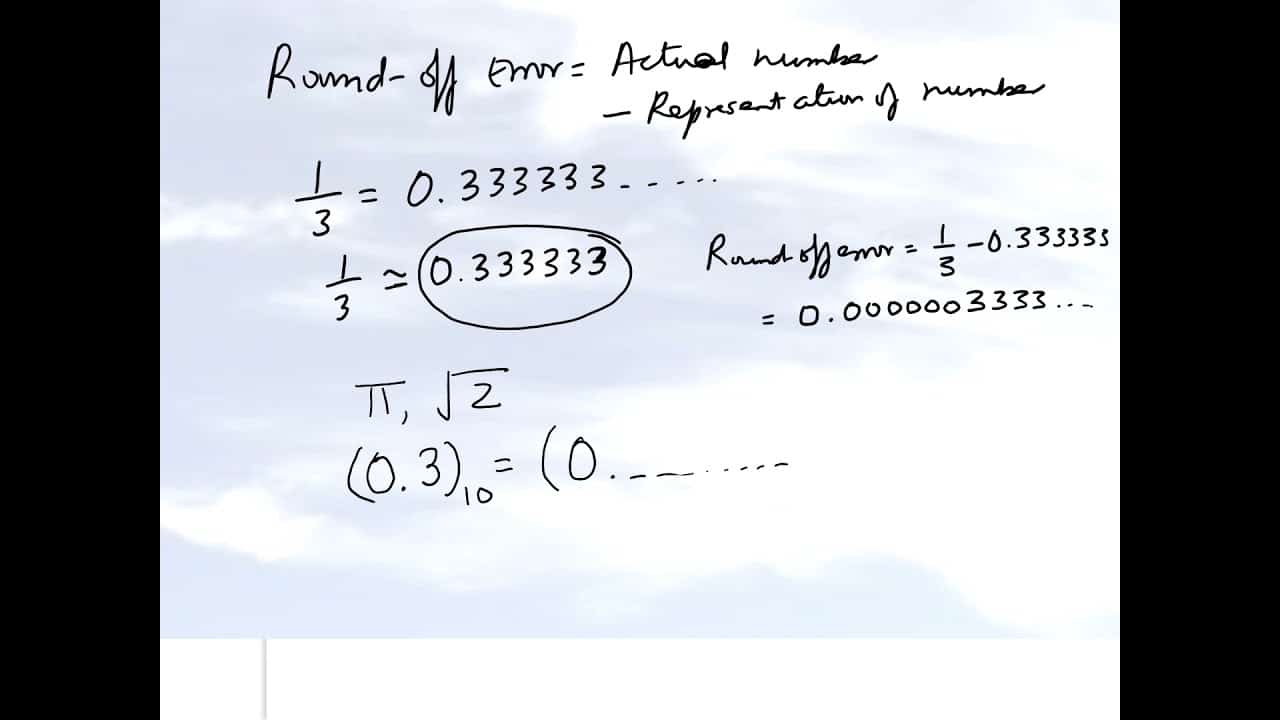Round-off error, also known as numerical truncation, is the difference between the exact mathematical result and the calculated or approximated result of a mathematics operation, such as multiplication or divisions. It occurs when the number of digits used to represent a number is not sufficient to represent the entire result accurately. This can occur when values are rounded off or truncated to fit into the allowed range of values, or when an imprecise representation of a computation is used.
Round-off error is a form of numerical error which is inherent to all numerical calculations. It is the difference between the exact result and the approximated result of a calculation, which is caused by the finite number of significant figures available. It is a common phenomenon when using calculators and computers, which only have finite precision capabilities. It is usually negligible in magnitude unless it accumulates or propagates in the course of a numerical calculation and causes a large error in the result.
For example, when dividing 0.3 by 0.2 on a two decimal calculator, the true result is 1.5, while the computed result is 1.50. There is a Round-off error of 0.005 for this calculation.
To minimize the effects of Round-off error, decimal calculations should be done as accurately and precisely as possible, and the number of significant digits should be minimized. Additionally, computer programs which handle large calculations can be written to use more accurate data types, such as double or even quadruple precision. This allows for greater accuracy and helps to reduce the effects of Round-off error.






